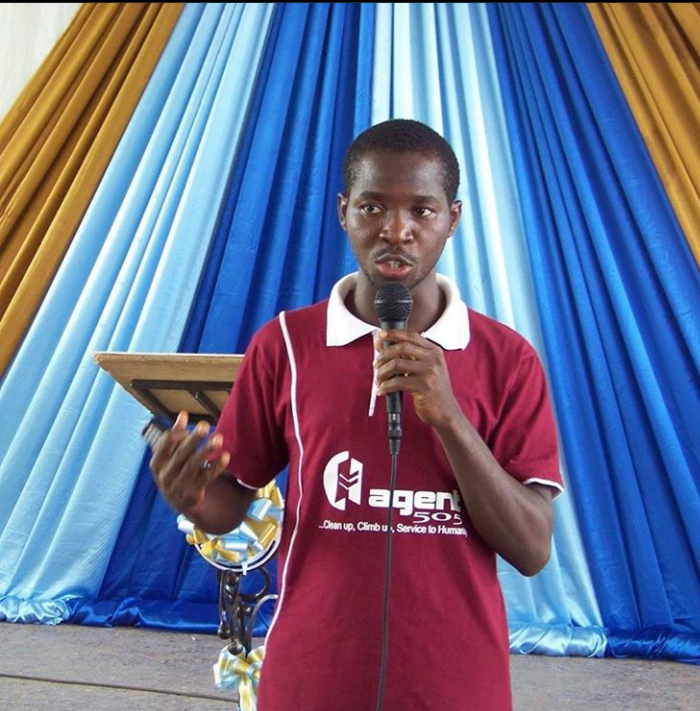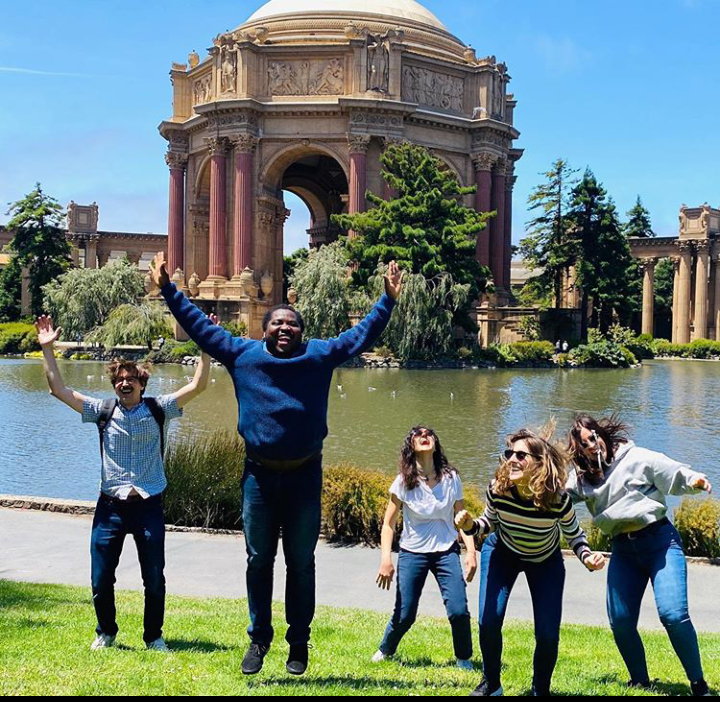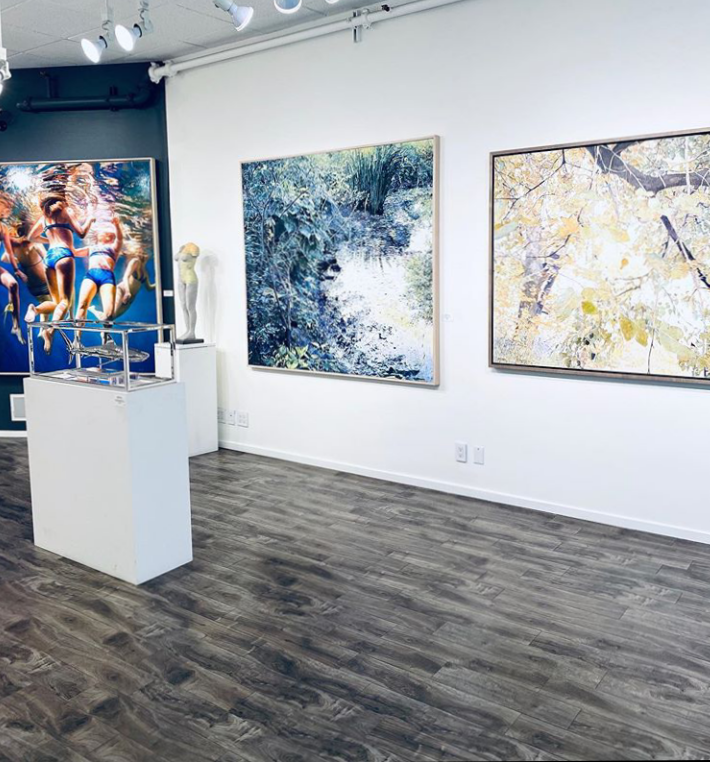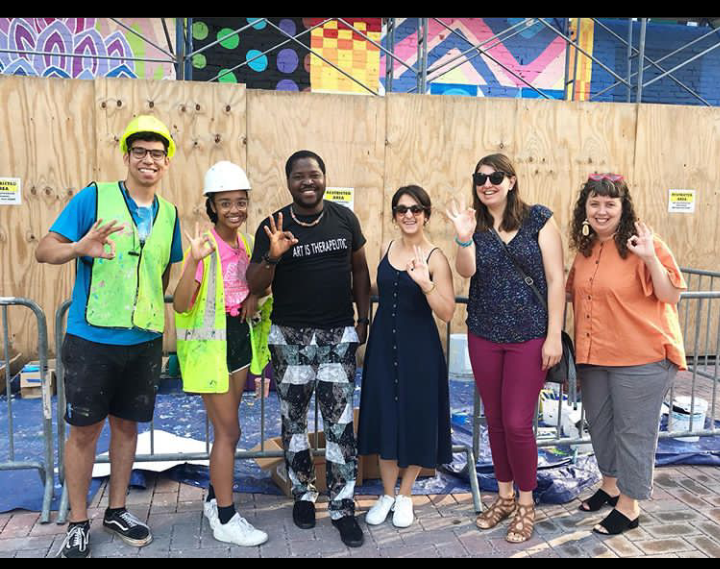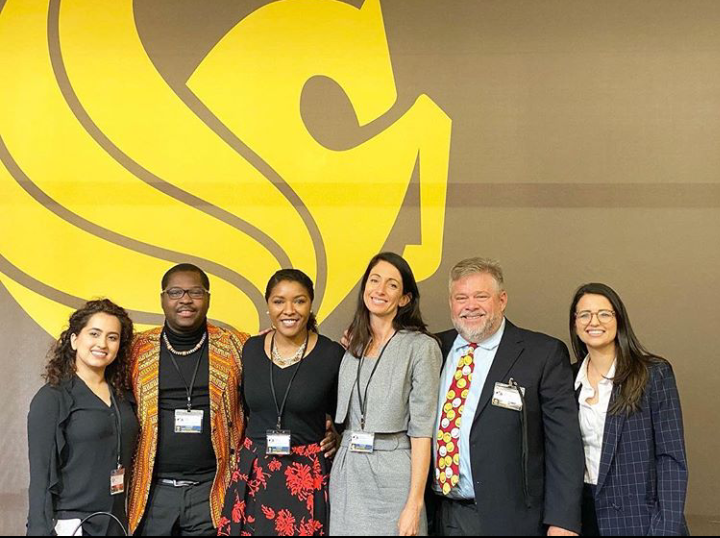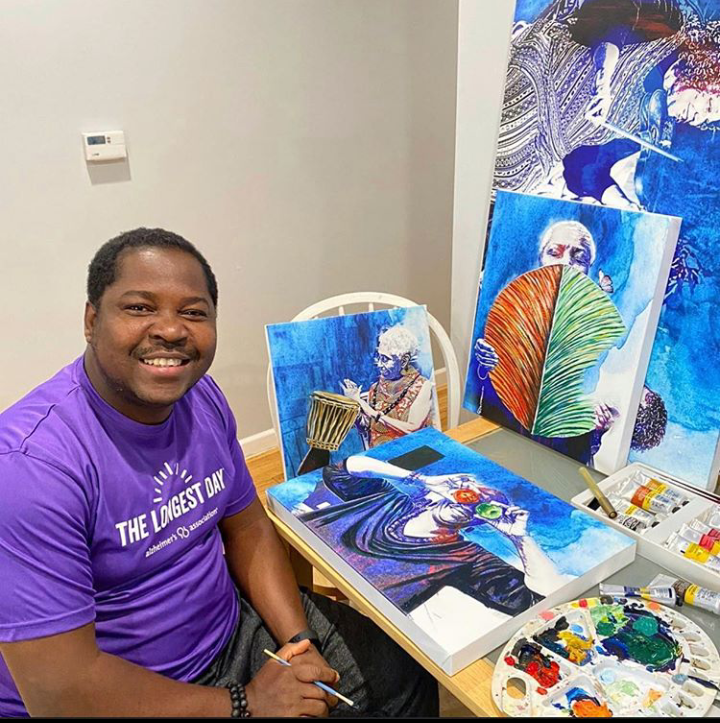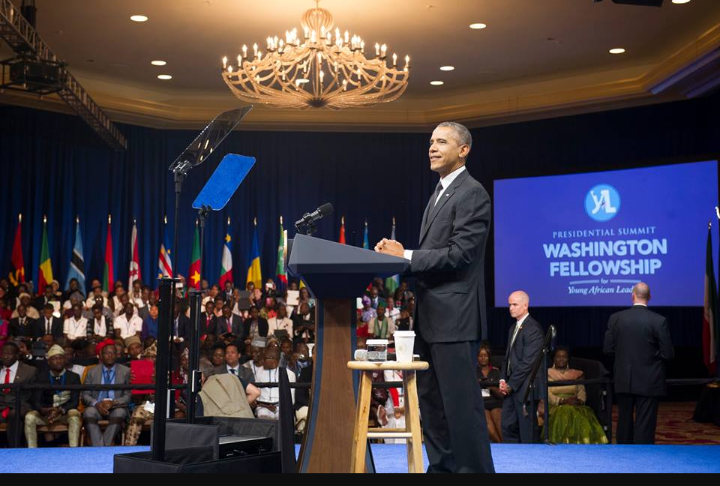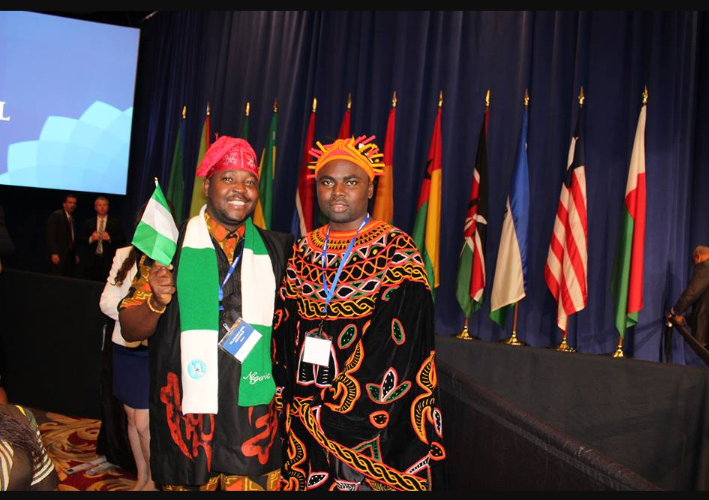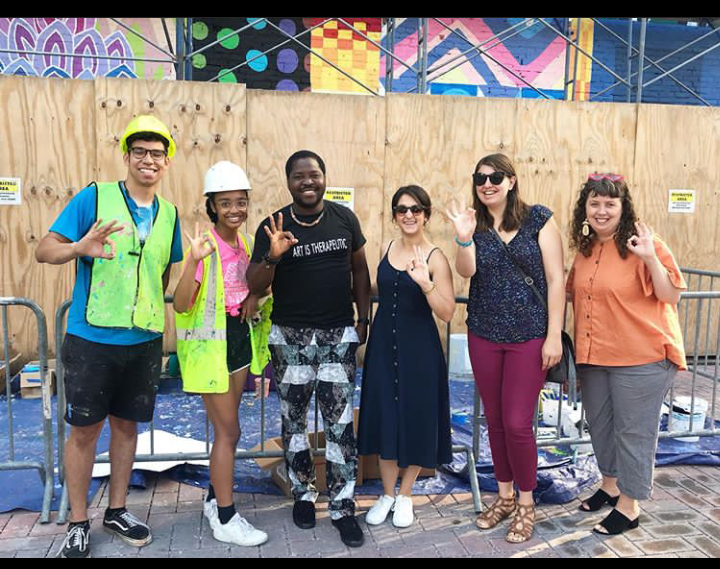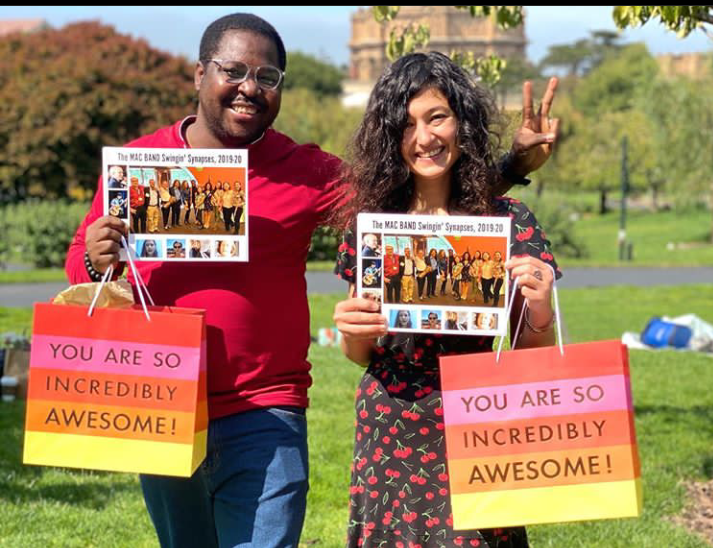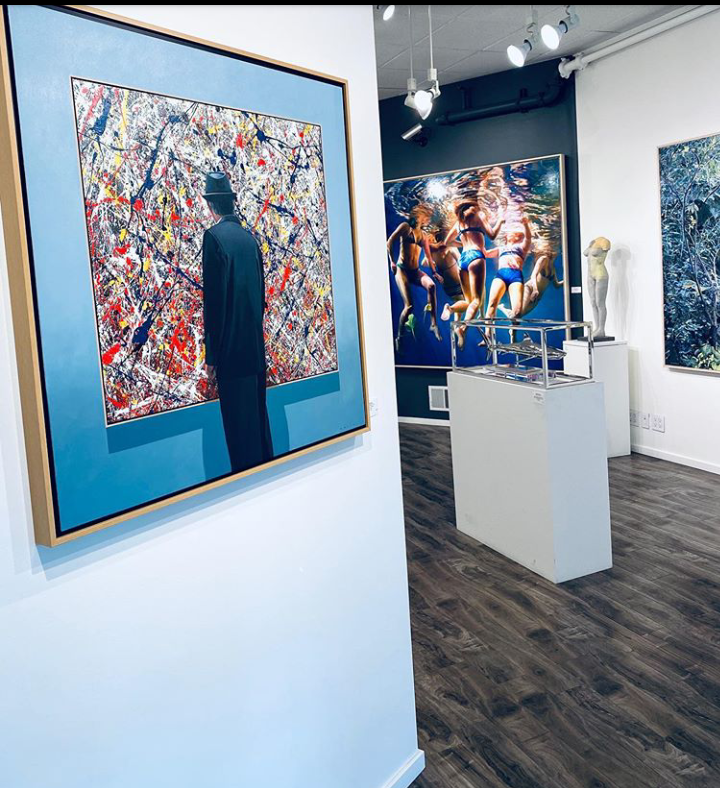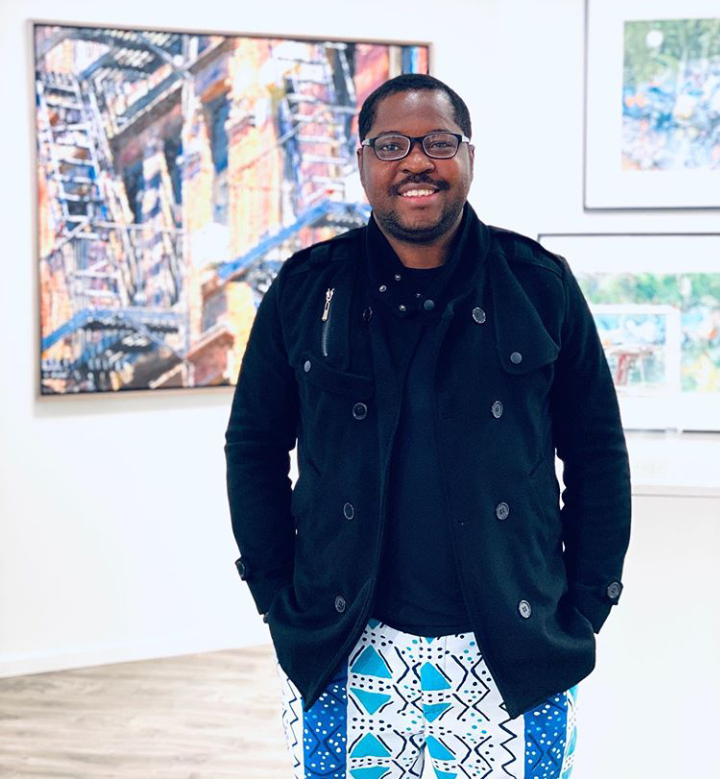I remember the memories of drawing cartoon characters, especially Mickey Mouse and Popeye. I was fond of using jumbo markers to create designs in my school exercise books. Sometimes, I could be restless to the extent that I have to look for any available paper to express myself. I loved gumming papers together to create collages and designs. Surprisingly, I didn’t really pay attention to this creative side of me neither does my parents do. I think I can confidently say I am a chip of the old block. I have a deposit of the creative sides of my late dad who sometimes acted in the capacity of a local welder and as a farmer. As a farmer, my father made his farm tools from scraps and would sometimes rent out to people in our neighbourhood. As time went on, I met a neighbor of mine when I was much younger, who studied accountancy in the college but did lots of arts and crafts including a giant size car which got him lots of contract from doing that. I began visiting him in the evenings and weekends to observe and possibly support if need arose.
After my junior secondary school, I followed my childhood friend to Science class. I went to science class because of the prestige that people accord it. Art class students were considered rather unserious during my secondary school days. In fact, art wasn’t considered a lucrative course.
In the first term of my senior secondary sometime in 1997, I was performing poorly as a science student. It was as though the subjects were encoded for me and it was very difficult for me. So, I failed so many class assignments and tests. It was then that I decided to change my route and moved to Art class regardless of whatever people thought or said. In no distant time, my grades improved and I became aware of the power and the prestige of being an art person. I became an art apprentice in the year 2000 and started teaching arts in about six schools (Primary and Secondary schools) on a weekly basis for the period of three years. That was how I saved more money to write exams and paid for tuition fees later on.
I had to write WASSCE seven times in seven years before I got admission to study arts in the University. I went to study arts both in Auchipoly in 2004 and Fine Applied Arts at the prestigious Obafemi Awolowo University, Ile-Ife, South West Nigeria. I have done more professional certificate courses on Dementia and the arts from University College London (UCL), Psychology and Mental Health from University of Liverpool, Medicine and the Arts; Humanizing healthcare from University of Cape Town, South Africa and Leadership in Art and Culture from University of Leeds.
After I graduated from Obafemi Awolowo University in 2010, I asked myself a critical question, what would I do differently as an artist? Considering that Nigeria is very rich in art and culture, arts expos, fairs, festivals and exhibitions but I realized that something was not adding up. Something was missing. I started making research on the health benefits of the art. I did a Google search of professionals in Nigeria who are arts in health practitioners and also tried to find out if there were institutions or community-based organizations that were doing something in that line. My expectations were met with disappointment but I wasn’t discouraged in my pursuit of finding ways of practicing the use of arts for therapeutic purposes.
After my NYSC in 2011, I got employed in 2012 and I started teaching primary school kids. I never knew that would be one of the game changers in my art journeys. I didn’t know that anything phenomenal would come out of being a primary school teacher. One of my students was dyslexic and I have had to work with a few of them that had other learning disabilities. I realized what art does to them. Art became a tool for social engagements and foster interactions for them. Art gave them the voice and the dignity they longed for. It gave them the inclusion that every child living with disabilities should have. They were always happy and sometimes would want to stay longer in my studio because art had become a tool of communication of their feelings and their connection with their classmates. I saw the joy on the faces of their parents and their classroom teachers who often testified how engaging they had been in their subjects.
In a bid to make therapeutic arts more formalized, I founded my first art organization in 2013 called Tender Arts Nigeria. It was this year we did our arts in health program in partnership with the National Sickle Cell Center Lagos Nigeria. Afterwards, we moved to do more in other marginalized communities for vulnerable population living in the slums.
In 2015, I got a fellowship award to travel to the US as I was selected among the 500 exceptional Young African Leaders for the Mandela Washington Fellowship which was the initiative of the President of the United States, President Barack Obama. This brought a major shift into my life and art career. I was at Tulane University in New Orleans learning about arts and civic engagement. It was also during my time in the United States that I got introduced to Arts in Medicine Programs and Art Therapy. There, I met with one of the leaders of American Art Therapy Association Professor Jordan Potash in Alexandria in August 2015.
I returned to Nigeria in 2015 after my fellowship year in the United States. I continued my community and therapeutic art engagements. In 2016, I became an international art director for international organization that work in North East Nigeria on victims of Boko haram insurgency. This gave me the opportunities to work with the survivors of terror attacks and families displaced by Boko haram menace.
During that period, we had started working in hospices and more hospitals and healthcare centers in Nigeria. All of these growths led me to found my second organization called Arts in Medicine Projects through a grant support from the U.S Mission and U.S State Department in Washington DC. We partnered with the Sickle Cell Foundation Nigeria to facilitate some therapeutic arts programs for children and young adults living with Sickle Cell anemia in Nigeria. After then, we partnered with Down Syndrome Foundation Nigeria, Lagos University Teaching Hospital, Children Living with Cancer Foundation and other NGO’S.
In other to create educational and more learning experience for the volunteers in Arts in Medicine Projects, I got another grant support from the U.S Mission to Nigeria in 2018. This helped me to found my third organization called ‘Arts in Medicine Fellowship for students and Professionals in arts and healthcare. Consistency and continued engagements has led us to found more arts in medicine projects in over 9 states in Nigeria and other African countries including the continent of Asia. It is like a movement of using art of social change, a transferable change from Nigeria to the rest of the world. I currently lead the largest arts in health practitioner network on the continent of Africa.
In 2019, I was selected for another fellowship in the U.S. I became an Atlantic Fellow for Equity in Brain Health at the University of California San Francisco as Research Scholar in Breath. It’s a new space for me to connect more with those in the Medical field. I see myself as an artist in Neuroscience.
Suffice to say what I couldn’t find I became. I became a mentor to hundreds of students and professionals in Nigeria and around the world in the practice of using arts for therapeutic functions. I also established a community-based learning art in health institution called ‘Arts in Medicine Fellowship’.
Looking back in my early years in arts, it was never a walk in the park. It was a really hilarious moment as I was scorned and mocked when I told my friends and family members that I would love to pursue Fine arts as a career because art was not considered as a lucrative course. Some people even pitied me and suggested I should rather study mass Communication, Law, International relations, Accountancy among many others.
‘How are you going to feed yourself and your family by being an artist?’
Artists are beggars’
‘Do you want to end up as roadside artist chasing cars before you feed?’
These were part of many questions that people asked me. Well, I wasn’t scared of the future when I chose to study Fine arts in the college. I just trust my journey and look at where it has brought me to today. I have not arrived yet, I am a man on mission. I am still on a transit.
When I started art in Medicine programs through my organization, there were lots of doubts, roadblocks, resistance from those in the healthcare institutions. Other accesses we got would take months and continuous follow up on stakeholders explaining on why they need to grant us opportunity to bring arts into healthcare spaces in Nigeria. I am glad we didn’t give up because of naysayers and bureaucracy.
The breakthrough in my art career I would say was when I was selected for Mandela Washington Fellowship. There, I had the privilege to meet President Barack Obama. I still remember the handshake with him, his palm is soft and he is a great and respected leader too. Coming to America really changed my life as a Nigerian artist. It was like being put in the right place to activate my potentials and strengthen my passion in the pursuit of using arts for wellbeing and social change. What I did with that opportunity is what has led to some of the great results we are experiencing today in my organization.
I often tell people that I am a global citizen. I am first human before I knew my country of birth. Let me establish this, I didn’t break into America. I was invited to the United States by the US government on a ground of honour and appreciation for the great works I was doing back home in Nigeria. It was an all-expense paid fellowship program that brought me into the US. I was embraced by the American people and I have lots of friends here since my first visit into the country. Two of my art works were donated to the US State Department in the year 2015 and would possibly become part of the future US Diplomacy Center.
I have had presentation about my works in Nigeria at the US State Department, media interview with the Voice of America. I have facilitated art programs for American people starting with children, young adults and older adults. These beneficiaries of my therapeutic art engagements include those living with neurological and learning disabilities, like autism, Down’s syndrome, cerebral palsy and dyslexia. Others include those living cancer, Alzheimer’s disease and other form of dementia. I have also led art programs for seniors and Professionals in the United States. So, you see here, I am an asset to United States just like I am in my home country Nigeria. I am grateful to American government for opening their doors for me but that open door has benefitted Americans too. It is a mutual benefit for the U.S and Nigerian Government. My art engagement has helped to build and strengthened the diplomatic relationship and ties between Nigeria and the United States. The U.S is my second home country in the world. I hope to live here for a longer period some day.
I am currently in the US for the third time. Any time I check into the States, I am always asking myself this question, what can I do for America and the American people? It has not always been what America can offer me alone; it is what they stand to gain by virtue of my presence in the country. My coming to the US has always been on the ground of honour, I am an asset that the world is looking for, so America is privileged to have me each time I am here.
I am mentoring hundreds of students and Professionals through my Arts in Medicine Fellowship programs in Nigeria and Arts in Medicine projects in other African countries. I have always believed in shared greatness, that is, helping the next generation rise on my shoulders to see the future. I want to people be able to say I am successful today because Kunle helped me. I want someone to say that they didn’t give up on their dreams because Kunle didn’t give up on his dreams and even when he was confronted with years on failures, he remained undaunted. I want people to say that Kunle inspired them to achieve greatness. My greatest achievements would be stories of lives touched by their encounter with me. I want to inspire people to be better version of themselves.
Absolutely, we are currently expanding our programs and doing more in the area of art for social justice, art for social change, we have worked with prison inmates, girls in juvenile homes, art for maternal mental health amongst many others. We will go where art is needed because art does meet the emotional needs of people. Art helps humanity to heal even in the face of the global health pandemic.
Worthy of note is one of the major challenges that we face in running our therapeutic art programs is funding. There is so much that we actually want to do but we need money. We have learnt to leverage little support that we receive to do big projects. My organization was founded on Volunteerism but I want us to have a space we can call our own in the nearest future, an arts in health center for administrative use and it can serve other purposes like conference, exhibition, research, education among many others.
The height of my journey was having a day set out to celebrate me in the U.S. I have never thought that I would ever have a day named after me in my home country talk more of the United States. I feel humbled and honoured at the same time to be recognized for my contributions and development works in the United States and Nigeria. It is a day I will continue to use my platform to inspire community actions that would lead to greater change in the communities in the US, Nigeria and around the world. I do tell people this I am not a celebrity artist no matter my level of accomplishments. I am a servant leader. I am here on this earth to use my God given opportunities and potentials to serve humanity and bring joy to the world. It feels great to have a day named after you while you are alive based on your works. Having a day named after me in the United States is a big deal but I don’t allow that to get into my head. I am here to serve and I will continue to serve till I leave this planet. We are all humans with opportunities and privileges. I attribute my success to the support of my friends, family members, diplomatic missions, partner organizations and my team at Arts in Medicine Projects and Fellowships
Personally, I would say I am a painter and my works are mostly mixed media.
Photography, Painting and digital processing are part of my technique in the execution of my arts. I love filming and making documentaries too. Let’s say I am a multi-disciplinary artist. I am so keen on mental health, brain health, identity, environment and social issues in my body of works.
